Classic Gear: The Rickenbacker 12-String
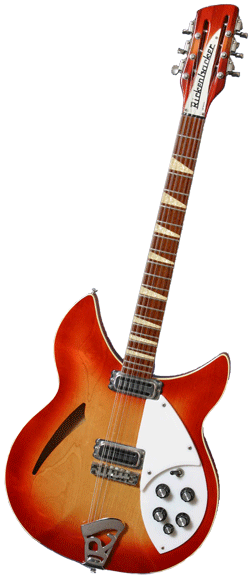
This is that thin wild sound. The one and only instrument to associate with terms like Byrdsian and jangly. An unmatched guitar in design, craftmanship, innovation, and sound. Rickenbacker makes a fine guitar with six strings, but 12 is the magic number.
Playing a 12-string guitar doesn’t mean you have to learn how to play with six more strings, it’s just that the strings are set in pairs. It’s played exactly the same as a regular guitar, but your finger is pressing down two strings at once, each tuned to different octaves.
Opposed to acoustic 12-string guitars (and mandolins, which are similarly designed with 4 pairs of strings), Rickenbackers are designed with the lower string on top of the high string, lending to its characteristic sound.
One of the lesser known features of these guitars is the Ric-O-Sound kit, which allows the pickups to split the signal of the guitar to two different outputs. Imagine plugging into a rich Fender Twin Reverb and patching the 2nd line through a Space Echo or a cheap old fuzzbox. The effect is like having two distinct guitar tones playing in exact synchronicity.
Lastly, just look at the thing. Damn beautiful. The twisted and tech-looking headstock, modernist slash f-hole, tiered white pick guard, and the signature “R” in the bridge. Pictured is the classic red Fireglo color scheme, one of many often changing themes in the Rickenbacker legacy, the other more famous colors being Mapleglo (Byrds) and Jetglo (Lennon).
Examples
George Harrison got his hands on the 2nd 12-string Rickenbacker ever made. The Beatles had access to every instrument their imaginations could conjure up so it’s no surprise they’re on top of the classic gear front again. Leads like the one in Hard Day’s Night tuned everybody in to the Rick’s wild sound:
The Beatles – A Hard Day’s Night
Pete Townshend was an avid Rickenbacker user and one of the best rhythm guitarists of all time. This is a full example of the raucous rhythmic power of the 12er, with an excellently brief solo. The Who’s debut is too great for words:
The Who – I Can’t Explain
The Byrds are the quintessential Rick band. Roger McGuinn is widely known as the king of the Rickenbacker 12-string. John Coltrane’s saxophone was inspiration to the devastating solo on this classic Byrds cut. Is he using the Ric-O-Sound on this one?
The Byrds – Eight Miles High
The Byrds may have owned the gleaming mercury sound of this guitar (actually a key component in defining the word ‘jangle‘), but they didn’t trademark it, dammit! Let’s dive back under the radar with a great song from Instant Orange’s excellent 1973 lp:
Instant Orange – Plight of The Marie Celeste
Also Recommended
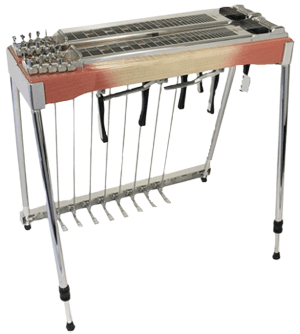
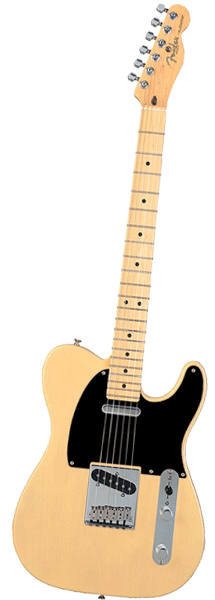
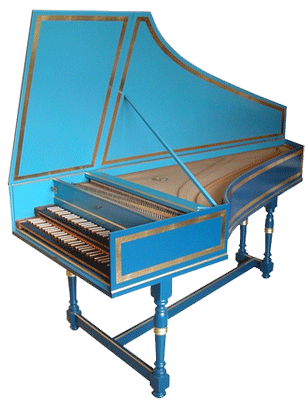
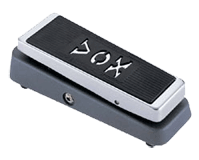
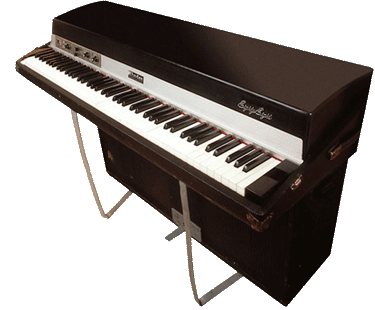
Don’t forget Tom Petty and The Heartbreakers. His sound was compared to The Byrds so much he was practically forced to cover “So You Want To Be A Rock and Roll Star”. Not to mention the album cover of “Damn The Torpedos” showing the Ric in all its glory.
Absolutely LOVE this site. Thanks for all the great tunes. Just wondering – would you ever thinking about adding a new category? I have been craving “country funk”. Folks like Jim Ford, etc…
Thanks for the compliment Miguel. A Jim Ford review will be in the works, actually.
Jimmy Page used a Rick 12 for Livin lovin on Zep 2, just listen to the main riff.
Let’s not forget Craig Anderton’s incredible Rick 12’s work with the late 60’s band the “Mandrake Memorial”.
Five things you might not know about the Rickenbacker 12-string:
1. The first ever Rick 12 was presented to Las Vegas country showband performer Suzi Arden, a then noted Rickenbacker user whose whole band used matching Rick guitars, bass and amps, in November 1963. It had the strings arranged with the octave strings above the standard ones, like every other manufacturer’s 12. All future Rick 12s would have the octave strings below the standard ones, which helps gives the Rick its distinctive “snotty” sound.
2. The first “name” player to use the Rick 12 was indeed George Harrison, who was presented with the second ever example on the Fabs’ tour of the States in 1964 – an advertising coup for the company, who were well aware of John Lennon’s longstanding exclusive use of a Rick 325 six-string and saw an opportunity to boost sales in Europe. The first recorded use of George’s new acquisition was on “You Can’t Do That”, the B-side of “Can’t Buy Me Love”. Listen for that chiming intro.
3. Roger McGuinn purchased his first Rick 12 after seeing George using his in the movie “A Hard Day’s Night”. McGuinn was already a seasoned 12-string player, having used a Gibson acoustic with an added DeArmond pickup since his Greenwich Village days. His famed arpeggio style owes much to his earlier roll-picking technique as a bluegrass banjoist.
4. In 1966 Rickenbacker introduced the 6/12 string converter, a device that screwed on to the face of the guitar and which, when engaged, used a comb-like arrangement to pull the octave strings downwards out of plectrum reach to allow standard six-string sounds, albeit with the burden of still fretting twelve strings at the neck. Players soon realised that carrying a second guitar would do the same job more easily, and examples of the converter are today rarer than hens’ teeth.
5. The curse of the Rick 12 (and of all other Rickenbacker guitars) has always been its very narrow fretboard, making open chords at the low end very cramped for players with large hands. When Tom Petty was granted a signature model in 1991 – the solid-body 660/12TP – he specified a unique wider fretboard which no other model has featured.
Most of the above: thanks to The Rickenbacker Book by Tony Bacon and Paul Day.
Don’t forget XTC. I heard that Andy Partridge actually wanted to borrow George Harrison’s Rick 12 to record with.